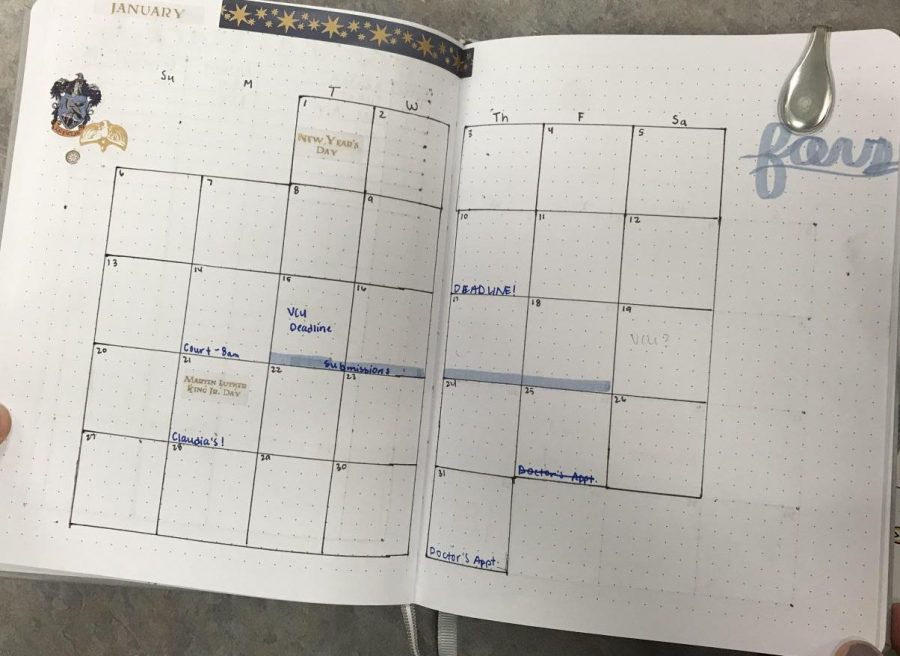Do You Even BuJo, Bro?
February 4, 2019
Taking social media by storm is a trend called bullet journaling, named for the special bulleting system it uses to keep track of your to-do list. It’s a combination of a planner, to-do list, diary, sketchbook, and much more, created to suite the individual user’s needs.
The main tenets of bullet journaling involve keeping a future log, monthly log, and daily/weekly log. Within each of these spreads, the journaler employs the traditional bullet journal key to designate between things to do, events, and notes. Although even within this key, there is room to play around.
Most people use a journal with a dot grid, rather than lined paper so they have more flexibility. With each spread being created from scratch, you can decide what you need and don’t need in your journal. Some people omit daily logs, while others never do drawings.
At Colonial Forge, you can find many people keeping track of their schoolwork with bullet journals. Isabel Dashtizad (‘19) considers herself a novice journaler, first hearing about it through a Youtube video.
“I started bullet journaling before my freshman year of high school. I stopped because I couldn’t keep up with it. It was a lot of work. I picked it back up because it’s the new year, new me and I want to stay organized and on top of things,” Isabel said.
Emily Imes (‘19), a more experienced bullet journaler, started after she got into bible journaling and figured the skills could carry over to her day to day planning.
“I used to just write things on my hand or I’d be like ‘oh I’ll remember that’ and then I’d never get it done. I’d always forget to turn things in,” Emily said.
Most people who bullet journal enjoy focusing on the aesthetics of their spreads, although Isabel finds this can sometimes put pressure on her to make it look good. Some compare themselves to journalers online, but Isabel’s biggest foes are in real life.
“I have a friend in Governor’s School who bullet journals and she has this whole color-coordinated thing, but mine is just a rainbow mess,” Isabel said, “I feel pressured sometimes that I’ll never live up to her skills.”
Meanwhile, Emily doesn’t compare herself to other people as much, and takes solace in the fact that her bullet journal is just for her.
In addition to simple planning spreads, you can also add spreads to track things like places you want to travel, movies to watch, and music playlists. Isabel’s favorite part of her bullet journal is her Pixels of 2019 spread, in which she has boxes for every day of the year that she fills in with her mood.
“So one color is ‘I had an amazing day!’ Then there’s good day, average day, sad day, angry day, depressed day, exhausted days. By the end of the year you have this box filled with rainbow little boxes,” Isabel said.
Emily’s favorite part is her extra spreads. For example, she keeps track of her budget and books she plans to read.
The most challenging aspect, according to Emily, is suffering from creative blocks. Isabel concurs, citing the time investment and need for new ideas every week as what made her quit.
“It makes me less productive because I spend a lot to time making it cute,” Isabel said, “If it looks bad, you lose motivation to keep journaling.”



